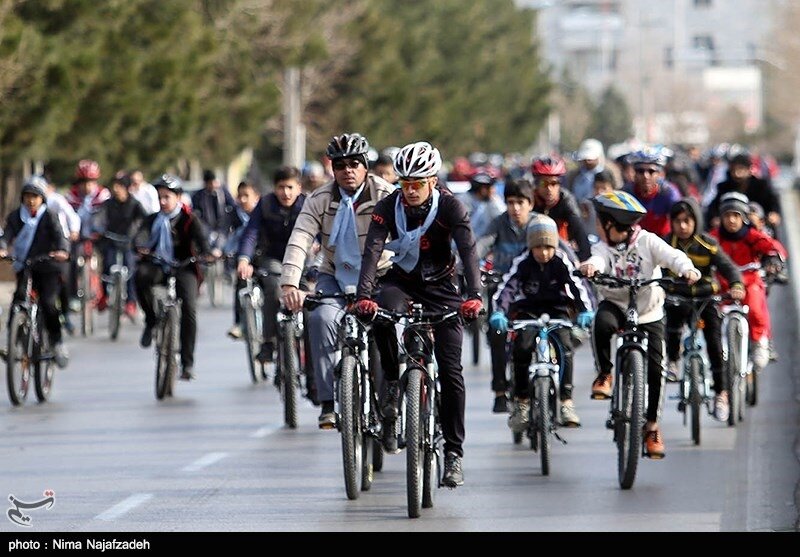Tehran to get 550 kilometers of bike lanes in 5 years

TEHRAN – Bikeways stretching to 550 kilometers will be built across the capital city of Tehran over the next five years, an official with Tehran Municipality has said.
Two years ago, a five-year plan was developed in collaboration with a Dutch group and international consultants aiming to develop cycling in Tehran, Mehdi Hassanzadeh, manager of the project for development of cycling in Tehran explained.
Tehran Municipality should coordinate with all relevant bodies, including the Cycling Federation, the Ministry of Sport and Youth, the Ministry of Health, the Ministry of Education, and the Traffic Police to develop cycling, he emphasized.
Pointing out that special cycling routes and parking stations will be stablished in the city within the next five years, he added that under the plan, a total of 550 kilometers of bike tracks - five kilometers per year in each area- will be built in Tehran.
At the same time, cultural, social, educational and informational activities should be undertaken to promote cycling among the citizens, he highlighted, ISNA reported on Sunday.
For example, the Ministry of Health has already spent funds on increasing the physical activity of citizens while reducing non-communicable diseases; on the other hand, the municipality of Tehran is seeking to develop cycling in the country to reduce air pollution and alleviate traffic congestion, he said.
He went on to add that co-ordination of these two bodies can also lead to the reduction of non-communicable diseases and increased physical mobility of citizens, in addition to the development of bicycles and the reduction of air pollution.
Lamenting that the municipality of Tehran sometimes do not follow the five-year cycling development plan, he emphasized that "If we follow the plan precisely, better results will be achieved."
He further stated that a coalition for international funding was formed last year to develop cycling in cities, with the Dutch Embassy, international experts and municipalities in attendance, adding, the international cycling development fund was intended to be provided to the cities joined the coalition.
The coalition's efforts were efficient, but unfortunately, with re-imposed sanctions, international funding faced barriers and we have been failed to attract funding, he regretted.
According to the latest agreements with the Traffic Police, the bike is to be recognized as a vehicle, and all the road laws and regulations will apply to bicyclists, he highlighted.
The plan has made good progress in past two years and the number of cyclists has grown, he said, adding, Tehran, on the other hand, has great potential for cycling, so cycling development should be implemented in line with being human-centered city.
Moreover, as a human-centered city, public transport, pedestrian pathways and cycling tracks altogether should be developed, he concluded.
Marzieh Salehi, an official with the Municipalities and Village Administration Organization, said in September that “biking holds a share of less than 1 percent in cities across the country, while in some pioneering cities, such as Amsterdam and Copenhagen, cycling accounts for 40 percent of the urban trips.
Mohsen Pourseyyed Aqaei, deputy mayor of Tehran for traffic and transport affairs, said in June that the national document on bike transport development proposed lately will increase cycling transport to 3.5 percent in the capital.
Effects of cycling on cities
A study by World Health Organization published in 2016 asserts that Tehran is one of the most air polluted cities in the world. Tehran is ranked 12th among 26 megacities in terms of ambient PM10 levels.
While cars are the most abundant in the city, heavy-duty vehicles including buses and trucks the most polluting ones contributing to 85 percent of the air pollution in the city.
Since the beginning of the current Iranian calendar year (March 21), Tehran air quality has been unhealthy for sensitive groups for 27 days due to high rate of ozone emissions, while one day reported to be unhealthy for all the residents, according to the Tehran Air Quality Control Company.
Traffic congestion and cars can contribute to ozone raise, as toxic emissions of oxides of nitrogen is released by diesel cars during fuel combustion in an engine.
Bicycles, as a cleaner transport fleet can have immediate and long-term benefits for the cities being haunted by air pollution.
FB/MG
Leave a Comment